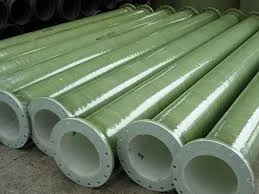
-
 Afrikaans
Afrikaans -
 Albanian
Albanian -
 Amharic
Amharic -
 Arabic
Arabic -
 Armenian
Armenian -
 Azerbaijani
Azerbaijani -
 Basque
Basque -
 Belarusian
Belarusian -
 Bengali
Bengali -
 Bosnian
Bosnian -
 Bulgarian
Bulgarian -
 Catalan
Catalan -
 Cebuano
Cebuano -
 China
China -
 China (Taiwan)
China (Taiwan) -
 Corsican
Corsican -
 Croatian
Croatian -
 Czech
Czech -
 Danish
Danish -
 Dutch
Dutch -
 English
English -
 Esperanto
Esperanto -
 Estonian
Estonian -
 Finnish
Finnish -
 French
French -
 Frisian
Frisian -
 Galician
Galician -
 Georgian
Georgian -
 German
German -
 Greek
Greek -
 Gujarati
Gujarati -
 Haitian Creole
Haitian Creole -
 hausa
hausa -
 hawaiian
hawaiian -
 Hebrew
Hebrew -
 Hindi
Hindi -
 Miao
Miao -
 Hungarian
Hungarian -
 Icelandic
Icelandic -
 igbo
igbo -
 Indonesian
Indonesian -
 irish
irish -
 Italian
Italian -
 Japanese
Japanese -
 Javanese
Javanese -
 Kannada
Kannada -
 kazakh
kazakh -
 Khmer
Khmer -
 Rwandese
Rwandese -
 Korean
Korean -
 Kurdish
Kurdish -
 Kyrgyz
Kyrgyz -
 Lao
Lao -
 Latin
Latin -
 Latvian
Latvian -
 Lithuanian
Lithuanian -
 Luxembourgish
Luxembourgish -
 Macedonian
Macedonian -
 Malgashi
Malgashi -
 Malay
Malay -
 Malayalam
Malayalam -
 Maltese
Maltese -
 Maori
Maori -
 Marathi
Marathi -
 Mongolian
Mongolian -
 Myanmar
Myanmar -
 Nepali
Nepali -
 Norwegian
Norwegian -
 Norwegian
Norwegian -
 Occitan
Occitan -
 Pashto
Pashto -
 Persian
Persian -
 Polish
Polish -
 Portuguese
Portuguese -
 Punjabi
Punjabi -
 Romanian
Romanian -
 Russian
Russian -
 Samoan
Samoan -
 Scottish Gaelic
Scottish Gaelic -
 Serbian
Serbian -
 Sesotho
Sesotho -
 Shona
Shona -
 Sindhi
Sindhi -
 Sinhala
Sinhala -
 Slovak
Slovak -
 Slovenian
Slovenian -
 Somali
Somali -
 Spanish
Spanish -
 Sundanese
Sundanese -
 Swahili
Swahili -
 Swedish
Swedish -
 Tagalog
Tagalog -
 Tajik
Tajik -
 Tamil
Tamil -
 Tatar
Tatar -
 Telugu
Telugu -
 Thai
Thai -
 Turkish
Turkish -
 Turkmen
Turkmen -
 Ukrainian
Ukrainian -
 Urdu
Urdu -
 Uighur
Uighur -
 Uzbek
Uzbek -
 Vietnamese
Vietnamese -
 Welsh
Welsh -
 Bantu
Bantu -
 Yiddish
Yiddish -
 Yoruba
Yoruba -
 Zulu
Zulu
frp damper
Understanding FRP Dampers Innovations in Structural Engineering
Fiber Reinforced Polymer (FRP) dampers represent a significant leap forward in structural engineering, particularly in the realm of seismic protection and energy dissipation. These innovative devices use advanced materials to absorb and dissipate energy during events like earthquakes, minimizing structural damage and enhancing the safety of buildings and infrastructure.
Understanding FRP Dampers Innovations in Structural Engineering
One of the standout features of FRP dampers is their high resistance to environmental conditions. Unlike conventional dampers, which may corrode or degrade over time, FRP materials are resistant to moisture, chemicals, and UV radiation. This durability extends the lifespan of the dampers, making them a long-term solution for structural protection. As urban areas continue to grow and existing infrastructures age, the need for resilient materials like FRP has become increasingly apparent.
frp damper

The effectiveness of FRP dampers stems from their ability to convert kinetic energy from seismic forces into heat through a process called hysteretic damping. When an earthquake occurs, the dampers absorb a significant amount of energy, reducing the stress on the structural elements of the building. This energy dissipation capability is crucial in minimizing vibrations and enhancing the overall stability of structures during seismic events.
Furthermore, FRP dampers can be tailored to meet specific engineering requirements. By adjusting the composition and configuration of the FRP material, engineers can design dampers that provide optimal performance based on the anticipated seismic forces and the structural requirements of the building. This customization leads to improved efficiency in energy absorption and can greatly reduce repair costs following natural disasters.
The application of FRP dampers is not limited to seismic protection; they are also being integrated into various structures to enhance overall performance. In bridges, for example, FRP dampers help mitigate vibrations caused by traffic load, extending the bridge's service life and ensuring a smoother ride for vehicles. In high-rise buildings, they serve to stabilize structures against wind-induced vibrations, contributing to comfort and safety for occupants.
In conclusion, FRP dampers represent a transformative technology in the field of structural engineering. Their lightweight, durable, and customizable nature, combined with their ability to effectively dissipate energy, makes them an invaluable asset in protecting modern infrastructures from the requirements imposed by natural disasters and environmental stressors. As engineering continues to evolve, FRP dampers will undoubtedly play a critical role in building safer, more resilient cities for future generations.









